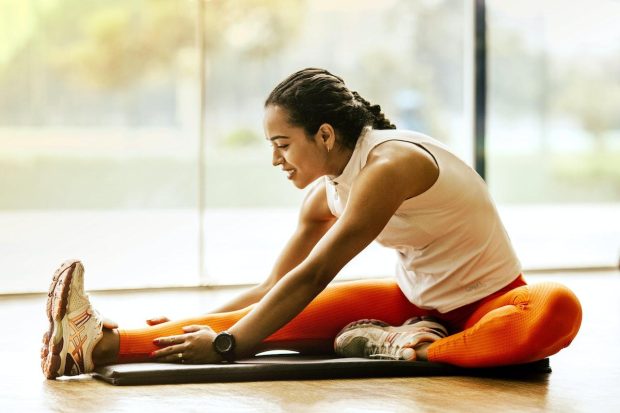Physical injuries from extraneous or light activities can be very stressful and painful. Nonetheless, you can find a physiotherapy clinic in Singapore that is very effective in treating your complaints.
These clinics give you some of the best corrective exercises that you can have. They will offer you a series of programmes that will benefit you and your schedule if you are a busy man.
Correcting your injuries properly is the right thing to do to work efficiently and effectively. Having the best corrective exercise for your body is a challenge, but with the help of some experts, you can do it.
In this post, I will detail some of the best corrective exercises you might want to know about before you start looking for a physiotherapy clinic. Make sure that you read every inch of it until the conclusion.

What to Do?
When you know something might be wrong with you, remember that only you can help yourself.
Make sure that you know where your complaints are and what kind of physical activities you did before you experienced the pain and injuries. Knowing that will make your and your physiotherapist’s situation much easier.
Start looking for a physiotherapy clinic that would suit your needs after checking and confirming that you have some kind of injury. The ones that would cater to your problems and treat them with care.
There are a lot of clinics that would offer you affordable prices but do not live up to your expectations, which will probably leave you disappointed.
So the best thing you can do is ensure you have the right budget and contact the right physiotherapists in Singapore. Quality is always better than quantity, which is almost true for all.
The Best Corrective Exercises
Let’s go on to the corrective exercise that you may do there now that we’ve finished talking about picking the best clinic. Using an understanding of anatomy, kinesiology, and biomechanics, corrective exercise addresses and corrects movement compensations and imbalances to enhance overall movement quality both during exercises and in daily life.
Exercise, when done appropriately, has been demonstrated in research to be a safe and efficient way to treat and manage a variety of ailments.
Corrective exercise is used to correct imbalances and improper movement patterns that contribute to posture, balance, and overall body function problems.

Postural and movement assessments
Assessments are crucial in identifying postural stability, movement effectiveness, and potential injury concerns. The base from which a person will move is their static posture, which is how they show themselves while sitting or standing.
An individual’s posture can be a great indicator of muscular imbalances and trouble areas needing additional evaluation to make sense of the current conundrum.
Assessments of transitional movements involve movements without a change in the base of support, whereas assessments of active movements involve movements with a difference in the base of support. Hiking or jogging would include a change in the base of support, but squatting, shoving, tugging, and balancing movements do not.
Types of Corrective Exercise
Your assessments and your goals both have an impact on the corrective workouts you should perform. Your rehabilitation specialist will develop a care plan specifically for you after the assessments are finished.
ROM exercises, diaphragmatic breathing, isometrics, strengthening exercises, dynamic movements, stretching, and self-care methods could all be included in this. As you advance, the workouts will gradually test your functional stability, mobility, strength, endurance, and motor control.
Ideally, you should begin cautiously, increase your repetitions gradually as you advance, and finish conservatively.
Corrective exercises vary their approach to addressing imbalances and abnormalities. Before stretching or strengthening exercises, the injured and strained tissue structures are conditioned and revitalised.
Lower back pain
Lower back discomfort can frequently happen due to poor posture, ageing and wear and tear, sports-related injuries, and automobile accidents. Corrective exercise regimens for lower back pain relief concentrate on bolstering the deep spine’s stability and the main muscles in and around the low back.
Simple strategies to treat low back discomfort include stretching, rolling, and receiving a light massage, and after that, strengthening activities are crucial for treating current discomfort and averting future episodes.
Upper Back Pain
Your upper back pain could be brought on by:
-
- Examples of overhead tasks include reaching up to a high shelf or serving a tennis ball.
- Carrying a large backpack is especially exhausting if you only carry it on one shoulder.
- Poor posture, especially when you spend a lot of time using a computer,
Stop doing the activity that is making your upper back hurt, and then do the right sequence of stretches and strengthening exercises.
Tips for stretching
-
- When it’s cold, stay away from stretching. Stretching should be done either after a workout as part of the cool-down or after warming up the muscles with a light aerobic exercise (like walking or jogging).
- Instead of bouncing, gradually widen the stretch as the muscle relaxes.
- Although it shouldn’t hurt too much, you should feel some strain or a pull.
- Stretch more by taking deep breaths. Deep breathing will cause your body to tense up more, and as you exhale, the tension will be released, and the stretch will be increased.
- When you gain flexibility, extend the duration or frequency.
- If you experience extreme pain, stop stretching right away.
The benefits of corrective exercise
Here are a few exceptional advantages of corrective exercises that you might enjoy for the rest of your life.
-
- Your mobility and movement mechanics are enhanced.
- It enhances posture, stability, and movement control.
- It enhances the harmony of your body’s muscles, increasing your strength.
- It lessens the likelihood of accidents and eliminates needless strain on the body.
- It facilitates the creation of fresh workout possibilities that would not have been feasible in the past.
- Additionally, it filled the gap between recovery and resumed exercise or participation in sports.
- Lastly, it enhances your present level of mobility, fitness, or athleticism.
Final Thoughts
A corrective exercise regimen should target the compensatory movement and the underlying source of the issue. Corrective exercises are a very effective way to enhance movement patterns, improve motion, and lower injury risk.
Get an evaluation instead of assuming or wasting time on incorrect activities. A thorough evaluation by a qualified practitioner is the key to getting the best exercise for you.
A well-rounded approach to healthy movement and injury prevention is made possible by working with numerous professionals at different phases of rehabilitation and fitness.
Read More:

